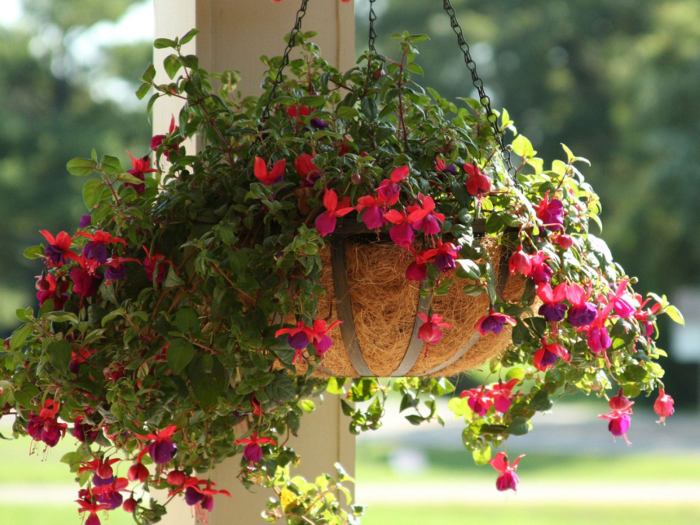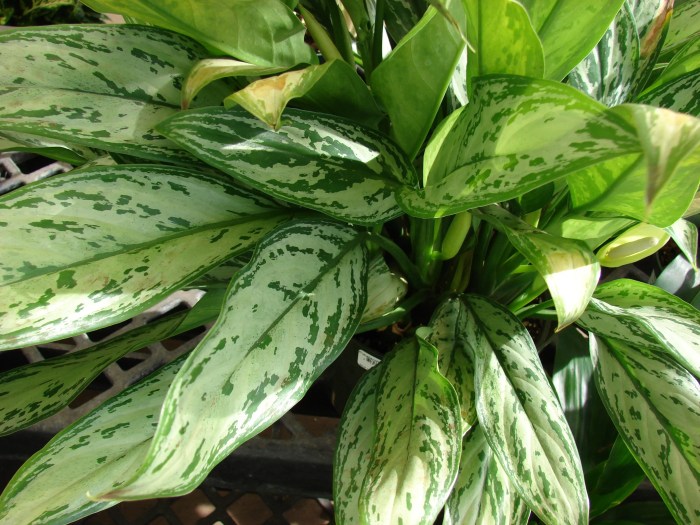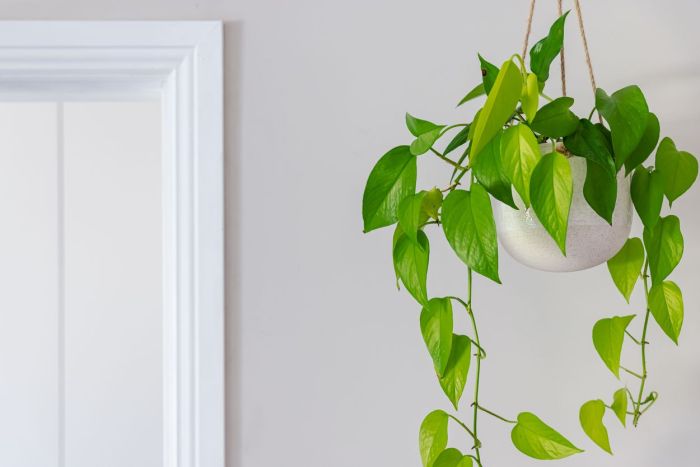Hanging plants that like shade indoor – Hanging plants that thrive in the shade of indoor spaces offer a unique opportunity to bring greenery and vitality to areas that may otherwise lack natural light. These versatile plants can transform dull corners into vibrant oases, adding a touch of nature and freshness to any room.
From trailing vines to cascading foliage, there is a wide range of hanging plants that can adapt to the lower light levels found indoors. Whether you’re a seasoned plant enthusiast or just starting your indoor gardening journey, this guide will provide you with the knowledge and inspiration you need to create a thriving indoor oasis with hanging plants that prefer shade.
Introduction: Hanging Plants That Like Shade Indoor
Indoor spaces often lack natural light, making it challenging to maintain thriving plant life. However, a wide variety of hanging plants flourish in shaded environments, offering numerous benefits to indoor spaces.
Incorporating shade-loving hanging plants into indoor environments not only enhances the aesthetic appeal but also purifies the air, reduces stress levels, and boosts mood. These plants add a touch of greenery and freshness to dimly lit areas, creating a more inviting and comfortable atmosphere.
Benefits of Shade-Loving Hanging Plants
- Air Purification: Many shade-loving plants, such as spider plants and peace lilies, have the ability to remove toxins from the air, improving indoor air quality.
- Stress Reduction: Studies have shown that the presence of plants in indoor spaces can reduce stress levels and promote relaxation.
- Mood Enhancement: The vibrant colors and textures of hanging plants can have a positive impact on mood, reducing feelings of anxiety and depression.
- Increased Humidity: Some shade-loving plants, such as ferns and mosses, release moisture into the air, increasing humidity levels and creating a more comfortable environment for people and plants alike.
- Aesthetic Appeal: Hanging plants add a touch of greenery and freshness to dimly lit areas, creating a more inviting and comfortable atmosphere.
Popular Shade-Tolerant Hanging Plants
Indoor hanging plants can add a touch of greenery and freshness to any room, even in areas with limited natural light. Several popular hanging plants thrive in shaded indoor environments, offering a variety of colors, textures, and shapes to enhance the ambiance of your home.
Here are some of the most popular shade-tolerant hanging plants:
| Plant Name | Scientific Name | Care | Image |
|---|---|---|---|
| Spider Plant | Chlorophytum comosum | Easy to care for, prefers indirect light, and can tolerate drought | [Insert image of a spider plant] |
| Pothos | Epipremnum aureum | Also known as Devil’s Ivy, prefers indirect light, and is known for its air-purifying abilities | [Insert image of a pothos plant] |
| Peace Lily | Spathiphyllum wallisii | Prefers low light conditions, and is known for its glossy green leaves and white flowers | [Insert image of a peace lily plant] |
| Chinese Evergreen | Aglaonema | Tolerates low light and can grow in a wide range of temperatures, making it a versatile choice | [Insert image of a Chinese evergreen plant] |
| Snake Plant | Sansevieria trifasciata | Known for its hardiness and ability to tolerate neglect, prefers indirect light | [Insert image of a snake plant] |
Ideal Growing Conditions

To ensure optimal growth for shade-tolerant hanging plants, it’s crucial to provide suitable lighting conditions, temperature range, humidity levels, and watering frequency.
Lighting Conditions:These plants thrive in low-light environments. Avoid direct sunlight, as it can scorch their leaves. Indirect light from north-facing windows or artificial light sources is ideal.
Temperature Range
Most shade-tolerant hanging plants prefer moderate temperatures between 60-75°F (15-24°C). Avoid exposing them to extreme cold or heat, as this can damage their foliage.
When it comes to hanging plants that like shade indoor, there are many options to choose from. One popular option is the grass wall hanging bunnings. This plant is easy to care for and can add a touch of greenery to any room.
For more information on grass wall hanging bunnings, visit this website . Other hanging plants that like shade indoor include the pothos, spider plant, and peace lily.
Humidity Levels
These plants generally prefer higher humidity levels. Regular misting or placing them on a tray filled with pebbles and water can increase the humidity around them.
Hanging plants that like shade indoor can add a touch of greenery to your home without taking up too much space. If you’re looking for a stylish way to display your plants, consider using a basket planter bunnings . These planters are available in a variety of sizes and styles, so you can find one that fits your needs.
They’re also easy to hang, so you can get your plants up and out of the way in no time. With a little care and attention, your hanging plants will thrive in their new home.
Watering Frequency, Hanging plants that like shade indoor
Water your shade-tolerant hanging plants when the top inch of soil feels dry to the touch. Avoid overwatering, as it can lead to root rot. Allow the excess water to drain from the drainage holes.
Care and Maintenance

Hanging plants that thrive in shade require specific care and maintenance to flourish indoors. Proper pruning, fertilization, and pest control are essential for their well-being.
Regular pruning encourages bushier growth and removes dead or damaged leaves. Use sharp, clean shears to trim stems back by one-third to one-half their length. Fertilize monthly during the growing season with a balanced liquid fertilizer diluted to half strength.
Pest Control
Hanging plants in shaded areas are susceptible to common household pests like aphids, mealybugs, and spider mites. Regularly inspect plants for signs of infestation and take immediate action. Use insecticidal soap or neem oil as natural pest control measures. Severe infestations may require chemical treatment, but consult with a plant care professional before using any harsh chemicals.
Indoor hanging plants that thrive in low-light conditions can also provide a touch of greenery during the colder months. Some popular varieties that can withstand winter include spider plants, snake plants, and pothos. For more information on hanging plants that can survive the winter, visit what hanging plants survive winter . These plants can brighten up your home and provide a natural touch even during the darkest days of the year.
Decorative Uses

Shade-tolerant hanging plants can transform indoor spaces into lush oases, adding a touch of nature and tranquility to any room. Their cascading foliage and vibrant hues create a sense of coziness and depth, making them ideal for various indoor settings.
In living rooms, hanging plants can be suspended from the ceiling or placed on shelves, adding a touch of greenery and purifying the air. In bedrooms, they can create a calming atmosphere, promoting relaxation and sleep. Kitchens benefit from their air-purifying qualities and can be adorned with trailing plants that add a touch of freshness and vitality.
Incorporating Hanging Plants into Different Rooms
- Living Room:Suspend plants from the ceiling or place them on shelves to create a lush, inviting atmosphere. Consider trailing varieties like pothos or philodendron for a cascading effect.
- Bedroom:Choose plants with calming scents, such as lavender or jasmine, to promote relaxation and sleep. Place them near windows or on bedside tables for a touch of tranquility.
- Kitchen:Utilize air-purifying plants like spider plants or peace lilies to keep the air fresh. Trailing varieties like ivy or ferns can add a touch of greenery and vitality.
- Bathroom:Take advantage of the humid environment by hanging plants that thrive in moisture, such as ferns or air plants. They can add a touch of spa-like ambiance.
- Office:Bring nature indoors to create a more inspiring and productive workspace. Hanging plants can reduce stress levels and improve air quality, making them ideal for offices.
Closing Summary
Incorporating shade-tolerant hanging plants into your indoor spaces not only adds beauty and tranquility but also provides numerous benefits for your well-being. These plants help purify the air, reduce stress levels, and create a more inviting and harmonious living environment.
By following the care tips and design ideas Artikeld in this guide, you can enjoy the beauty and benefits of hanging plants that thrive in the shade, transforming your indoor spaces into lush and inviting havens.
Commonly Asked Questions
What are the most popular hanging plants that like shade indoors?
Some of the most popular hanging plants that thrive in shady indoor environments include pothos, spider plants, philodendrons, ferns, and peperomias.
How often should I water hanging plants that prefer shade?
Water your hanging plants when the top inch or two of soil feels dry to the touch. Avoid overwatering, as this can lead to root rot.
How can I encourage my hanging plants to grow fuller?
To encourage fuller growth, prune any leggy or damaged stems. You can also fertilize your plants monthly during the growing season with a balanced liquid fertilizer.